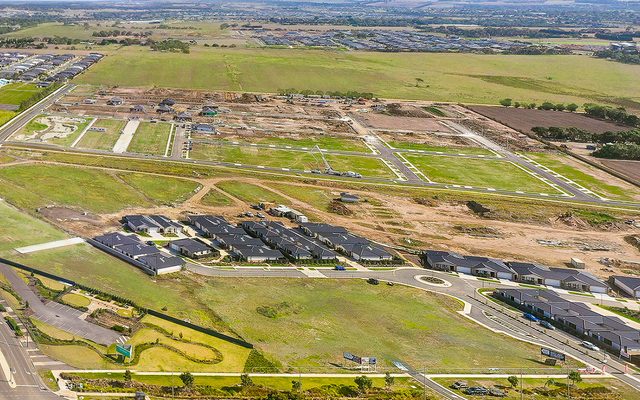This article is from the Australian Property Journal archive
AUSTRALIANS continue to seek out apartment living as dwelling and rent values exclude many from the house market, with affordability continuing to degrade across all dwelling types over 2024.
According to the latest ANZ CoreLogic Housing Affordability report, rising apartment demand has seen unit price growth overtake with houses.
Across the three months to October, Australian capital unit prices were up 0.9% compared to a 0.8% lift in house prices.
“We have seen demand for housing soften in recent months, with high interest rates, cost of living pressures and elevated home values deterring buyer competition. In some markets, this has contributed to value falls,” said Madeline Dunk, economist at ANZ.
“Growth in units is now tracking broadly in line with houses, as less available affordable housing has shifted more demand towards units.”
While the median Australian dwelling value and median rents have risen by 9.6% and 8.5% respectively over the past year, Australia’s latest gross median income level has risen by just 2.8% over the same period.
Across the year, the median dwelling value to income ratio was up to 8.0, up from the 20-year average of 6.7 and in line with the early 2022 peak.
This means the median income household needs 10.6 years to save for a 20% deposit for the median value dwelling, with it also taking more than half (50.6%) this income to service a new home loan.
With a record high of 33% of income needed for the median income household to service the median rent.
“The median value to income metrics look extreme, which means people are probably finding other means to get into the market compared to how they have in the past,” said Eliza Owen, head of research at CoreLogic.
“In reality, the median income household might buy something lower value than the median dwelling, and buyers in the market at the moment may be less leveraged and have relatively high income and wealth.
Between in onset of COVID-19 pandemic in March 2020 and October 2024, dwelling value growth in the two largest capitals was at 29.1% in Sydney and 9.9% in Melbourne.
While Perth, Adelaide and Brisbane far exceeded this, with growth of 76.0%, 70.8% and 66.9% respectively.
With Hobart recording 27.7% growth and Darwin up by 23.4% over the same period.
While Sydney was still the least affordable capital city to buy in, Adelaide has seen the greatest deterioration in housing affordability since the onset of the pandemic.
With the median dwelling value to income ratio rose from 5.9 to 8.9, Adelaide is now the second least affordable market, with 56.2% of income required to service a new mortgage, and almost 12 years to save a 20% deposit.
Adelaide is also now the least affordable city to rent in, with 34.6% of income needed to pay rent.
Hobart has actually seen recent improvements in affordability, with swelling values in Hobart sitting 11.9% lower the March 2022 peak and the median dwelling value to income ratio across Hobart falling from 9 to 7.3.
Canberra has also seen improvements, with the portion of income needed to service a new loan at 38.6%. Canberra is also now the most affordable rental market, with 24.9% in median income required to service rent.
With the median dwelling value at $799,000, Melbourne is now the sixth-least expensive capital to live in, ahead of just Hobart ($651,000) and Darwin ($493,000).
“This report highlights how squeezed even relatively high-income households are becoming at the national level,” added owen.
“There are some pockets like Hobart and Melbourne where the market is becoming more affordable, but it’s unclear whether that can last. Part of the nature of the property cycle is that once values fall by a certain amount, sellers and developers cannot add to supply, and values find a floor.”
Nationally, the median house and unit values between March 2020 and October 2024 were up significantly, with national house values up 44.5% and units up 20.7%.
With the gap between median house and unit value nationally up from $46,000 to $207,000 over the same period.
In September, the portion of income required to service a mortgage on a median value house was 54.7% and 41.6% for units.
“Looking ahead to 2025, housing affordability may slightly improve from a mortgage payment perspective as the cash rate moves lower. ANZ Research expects the RBA to begin easing in February. We see just 75bp of rate cuts in total, taking the cash rate to 3.6% by the end of 2025,” concluded Dunk.




